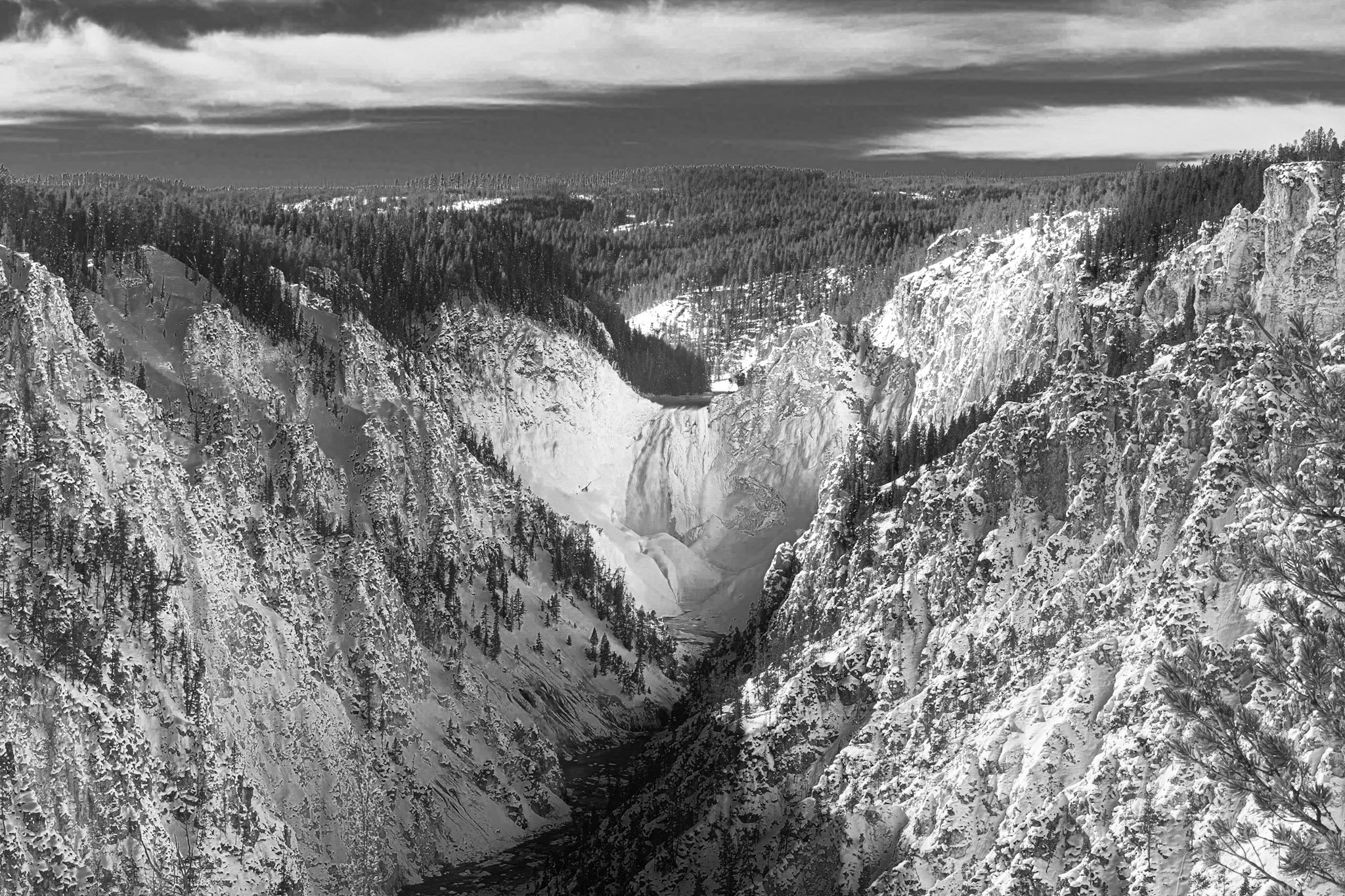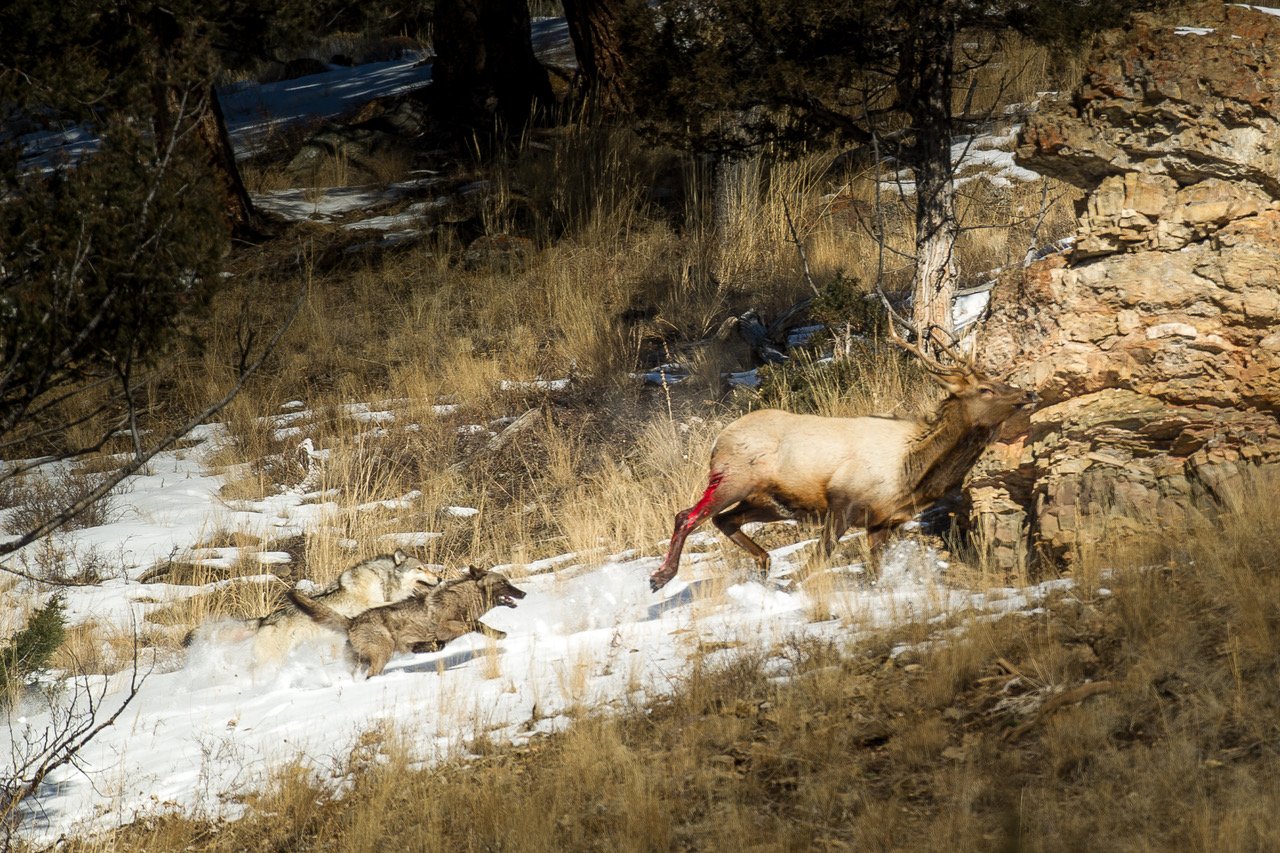Winter In Yellowstone National Park
I remember that morning. I came out of the Super 8 in Gardiner, Montana at 5am to make sure the car would start. I was dressed in my Yellowstone gear; lots of layers and my heavy neoprene boots with the super thick soles that keep your feet off the ice. That’s what you need to stay warm when its 25° below zero. As I made my way in the dark my small flashlight caught the eyes of a dozen or so mule deer in the parking lot. I had left the car unlocked, a lesson I’d learned the hard way the year before, and I got in. The car didn’t want to start but after a kind word under my breath, the engine caught.
Welcome to Yellowstone in winter.
Yellowstone National Park was created by Congress in March of 1972, which means March of 2022 is the 150th anniversary of America’s first national park. Yellowstone is an expansive, ever-changing landscape of mountains, meadows, geysers, boiling mud, snow, ice and the most diverse collection of wildlife in one natural place in North America. The hand of man is very discreet and Yellowstone today looks much as it did when Congress named it.
Of course, I was there to make photographs and so getting an early start is important. The sun begins to bring light about 45 minutes before sunrise and sometimes that very early morning light can be the best. Moments can happen quickly so it is important to be on the lookout at all times. For that reason its good to have a couple of other photographers in the car.
During the course of the day the light will change dramatically, as can the temperature. Early morning, as the sun is coming up the light changes quickly from cool to warm, from a bluish hue to a warmer golden. In the mid day, when the sun is shining the color and the shadows are harsh so we always hope for over cast or snow. “Bad weather makes great photos.”
The mighty bison and majestic elk aren’t around every corner so I have come to relish the varied landscapes in Yellowstone that bring joy and wonder to the eye.
The sun rises higher in the sky and we continue on our journey. We are on the lookout high, and low, always scanning, looking for movement in the periphery. We keep our long telephoto lenses at the ready because it could be around the next corner that we come across what we are always looking for, and so rarely find…Canis lupus…the wolf.
All the wolves in Yellowstone were killed by 1926, just 54 years after the Park was created. Why? The creation of the national park didn’t provide protection for wolves or other predators, and government predator control programs in the first decades of the 1900s essentially helped eliminate the gray wolf from Yellowstone. Without wolves the ecosystem was out of balance. Elk populations began to rise. Over the next few years, conditions of Yellowstone National Park declined drastically. A team of scientists visiting Yellowstone in 1929 and 1933 reported, "The range was in deplorable conditions when we first saw it, and its deterioration has been progressing steadily since then." Biologists were worried about eroding land and plants dying off. The elk were multiplying inside the park and trees such as aspen and cottonwood suffered from overgrazing. The park service started trapping and moving the elk and, when that was not effective, killing them. It took decades to generate enough support to fix the problem. Finally in 1991 Congress directed the U.S. Fish and Wildlife Service to develop an Environmental Impact Statement (EIS) for the express purpose of reintroducing wolves into Yellowstone National Park. In January 1995, U.S. and Canadian wildlife officials captured 14 wolves from multiple packs east of Jasper National Park. In March 1995, the pens were opened and between March 21 and March 31, 1995, all 14 wolves were loose in Yellowstone. Today there are about 100 wolves in Yellowstone made up over several “packs”. The balance of nature has been restored.
And while the wolves travel, and hunt, in packs, their smaller cousins, the coyote prefer to travel in pairs or often solo. The coyote gets a bad name around the country I think. To me, they are beautiful animals, scavenging the landscape and making sure nothing in the circle of life goes to waste.
Yellowstone in winter has views grand and small. The grandest perhaps is Yellowstone’s very own Grand Canyon…
…or an up-close view of the world’s largest active geyser, not Old Faithful, but Steamboat Geyser.
It is the thermal features like geysers that make Yellowstone unique. Vast areas throughout the park bubble and steam from over 400 active geysers and over 10,000 thermal features! Water erupting from Yellowstone's geysers is superheated to over 200°F and other areas melt the snow and ice for acres laying bare bubbling water and mud.
Wherever you go in Yellowstone you’ll find nature taking it’s own course. Whether its the shock and awe of witnessing the circle of life 100 feet in front of you…
…to the wonder of seeing a tree bloom in the dead of winter…
Yellowstone never disappoints. As the sun starts to dip toward the horizon we catch a late look at a herd of bison getting ready to bed down for the evening. Tomorrow will be another day and the Park will be there to greet us and surprise us once again.
All images copyright Michael S Cohen and may not be reproduced in any way without written permission from the artist. Prints and digital licensing are available.











